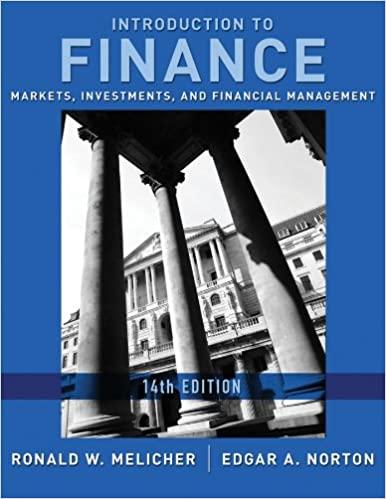

11-24 BASICS OF CAPITAL BUDGETING You recently went to work for Allied Components Company, a supplier of auto repair parts used in the after-market with products from Daimler AG, Ford, Toyota, and other automakers. Your boss, the chief financial officer (CFO), has just handed you the estimated cash flows for two proposed projects. Project Linvolves adding a new item to the firm's ignition sys- tem line; it would take some time to build up the market for this product, so the cash inflows would increase over time. Project Sinvolves an add-on to an existing line, and its cash flows would decrease over time. Both projects have 3-year lives because Allied is planning to introduce entirely new models after 3 years Here are the projects' after-tax cash flows (in thousands of dollars): 0 1 2 3 H + Project L - $100 $10 $60 $80 Project 5 -$100 $70 $50 $20 Depreciation, salvage values, net operating working capital requirements, and tax effects are all included in these cash flows. The CFO also made subjective risk assessments of each project, and he concluded that both projects have risk characteristics that are similar to the firm's average project. Allied's WACC is 10%. You must determine whether one or both of the projects should be accepted. h. 1. Define the term modified IRR (MIRR). Find the MIRRs for Projects L and S. 2. What are the MIRR's advantages and disadvantages as compared to the NPV? 1. What is the payback period? Find the paybacks for Projects L and S. 2. What is the rationale for the payback method? According to the payback criterion, which project(s) should be accepted if the firm's maximum acceptable payback is 2 years, if Projects i and Sare independent? If Projects L and Sare mutually exclusive? 11-24 BASICS OF CAPITAL BUDGETING You recently went to work for Allied Components Company, a supplier of auto repair parts used in the after-market with products from Daimler AG, Ford, Toyota, and other automakers. Your boss, the chief financial officer (CFO), has just handed you the estimated cash flows for two proposed projects. Project Linvolves adding a new item to the firm's ignition sys- tem line; it would take some time to build up the market for this product, so the cash inflows would increase over time. Project Sinvolves an add-on to an existing line, and its cash flows would decrease over time. Both projects have 3-year lives because Allied is planning to introduce entirely new models after 3 years Here are the projects' after-tax cash flows (in thousands of dollars): 0 1 2 3 H + Project L - $100 $10 $60 $80 Project 5 -$100 $70 $50 $20 Depreciation, salvage values, net operating working capital requirements, and tax effects are all included in these cash flows. The CFO also made subjective risk assessments of each project, and he concluded that both projects have risk characteristics that are similar to the firm's average project. Allied's WACC is 10%. You must determine whether one or both of the projects should be accepted. h. 1. Define the term modified IRR (MIRR). Find the MIRRs for Projects L and S. 2. What are the MIRR's advantages and disadvantages as compared to the NPV? 1. What is the payback period? Find the paybacks for Projects L and S. 2. What is the rationale for the payback method? According to the payback criterion, which project(s) should be accepted if the firm's maximum acceptable payback is 2 years, if Projects i and Sare independent? If Projects L and Sare mutually exclusive








